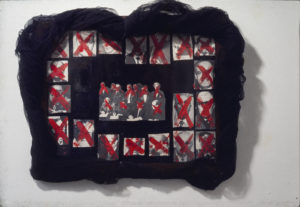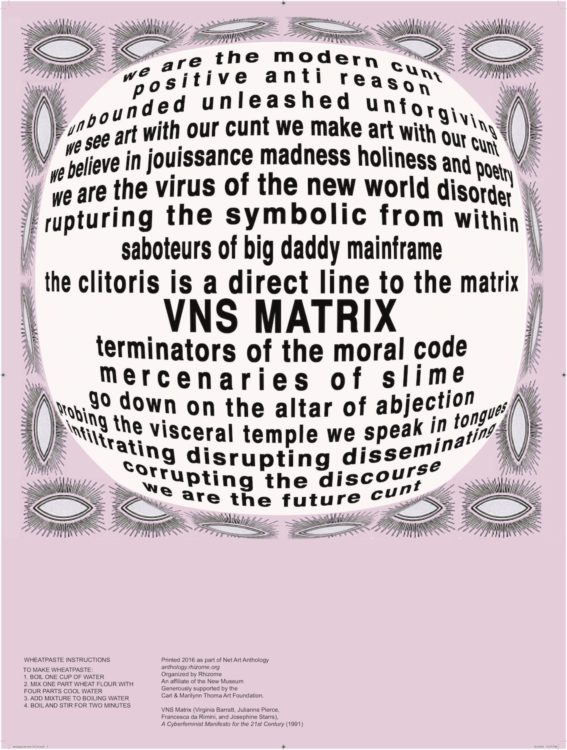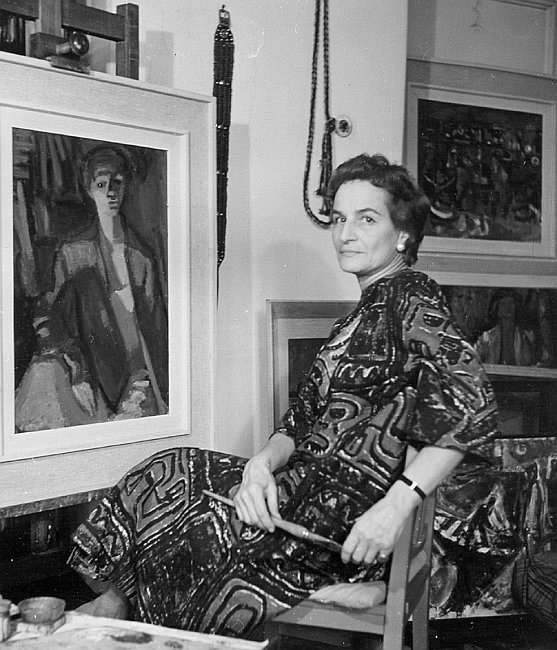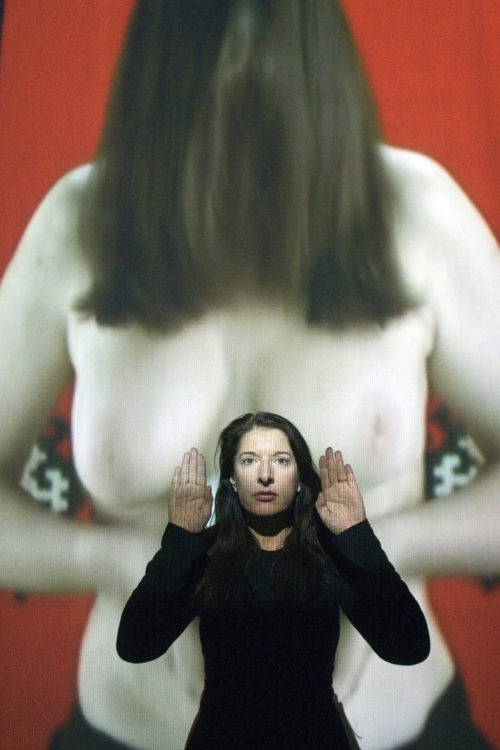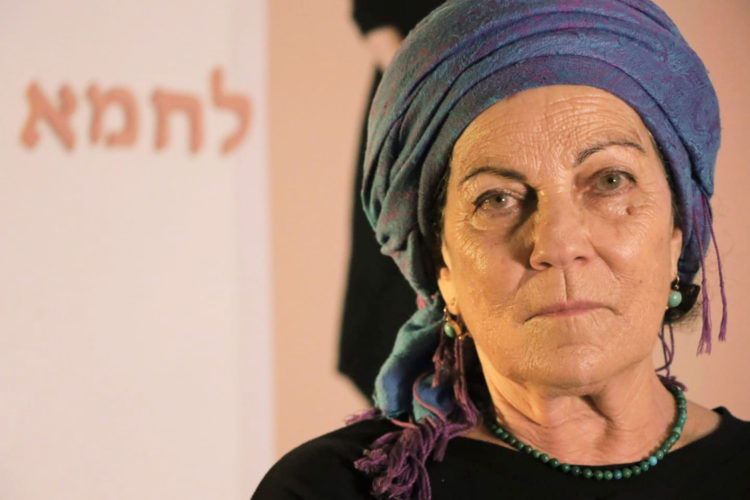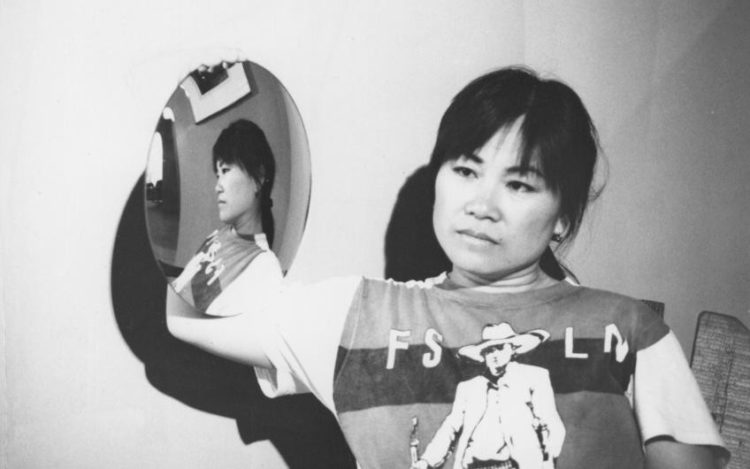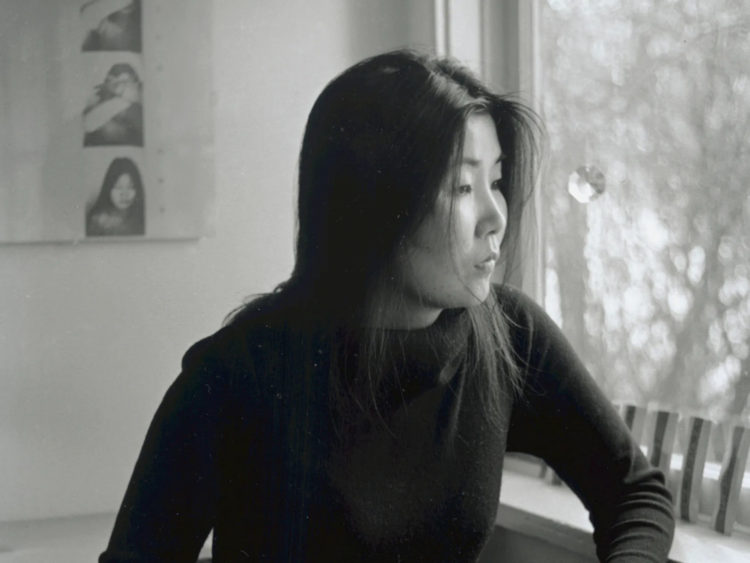Interviews
Ursula Reuter Christiansen, exhibition view TO THE BLUE HELL, total installation, 2020, Bizarro, Copenhagen
This interview was conducted by Mai Dengsøe on 8 March 2021 at Ursula Reuter Christiansen’s studio in Askeby, Møn, Denmark.
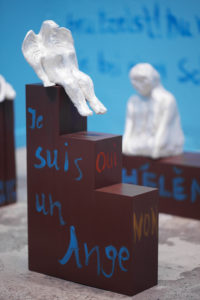
Ursula Reuter Christiansen, detail of the exhibition TO THE BLUE HELL, total installation, 2020, Bizarro, Copenhagen
Mai Dengsøe: Your latest show, TO THE BLUE HELL, at the exhibition space Bizarro in Copenhagen, Denmark, was an exploration of identity and an examination of the overall conditions of being a woman artist. Basing the show on a semi-autobiographical script you recently wrote, you reflected on topics including gender, generation, history, war, trauma, alcoholism, loneliness and hope, utilising a method that has been a characteristic of your work, your own story.1
Ursula Reuter Christiansen: My art is always about dialectics; the changing of life into art. This is the point I call transformation. Everything I do is transforming, mostly women’s stories, into art. Women I identify with. That is my incentive for my artistic production. I identify, and I transform. Questions such as, “Is this a good or a bad painting?” don’t interest me.
MD: You were a student of Joseph Beuys (1921-1986) when studying at the art academy in Düsseldorf. He was an important spokesperson for this idea that art and life should merge.
URC: Sure! In that sense Beuys changed everything. Furthermore, he argued that everyone could be an artist. Many thought he was crazy, but what he meant is that all people have capital, and that capital is creativity. What matters is how you use it. Everything was turned around: What is a community, what is a state, what is democracy? And then always returning to this: You have the capacity to change it. At this moment I said, “Sure, this is my life. I don’t care about art, and so on. I will use my life, and my story.”
MD: As a female artist did you feel as privileged in that process of changing life into art?
URC: Not a tiny bit. There is a big, big problem. When I got pregnant and had to go to Denmark, I said, “Oh Beuys, leaving everything here, what will I do?” I was working a lot and I wanted to continue that. Then he said, “It’s much better to become a mother. Artists … we have a lot of them, the best thing is to be a good mother.” I went crazy! It felt like a very big insult. Then I thought, I will show him! I will not bend, after everything I’d learned.
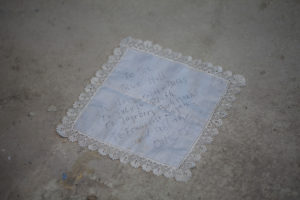
Ursula Reuter Christiansen, detail of the exhibition TO THE BLUE HELL, tablecloth with a written dedication, 15 x 15 cm, 2020, Bizarro, Copenhagen
MD: In your exhibition TO THE BLUE HELL, you wrote a dedication on a small tablecloth and put it on the floor. It said, “To Marguerite Duras, Sylvia Plath, Ingeborg Bachman, Françoise Sagan, and all the others.” You said you wanted to shed light on the taboo of the female alcoholic. Dedicating your work to women who have felt lonely, ashamed and desperate is a very caring gesture. Is it also an activist one?
URC: It’s about stigmatisation. You come into a bodega and a woman is sitting between men who are totally drunk, but somehow, she is the pig. My aunt was an alcoholic, which was humiliating because everybody knew and gossiped about it. I thought: to be a female alcoholic is the worst, because when men drink it’s okay, but when a woman gets drunk, she is an outlaw and disgusting. I wrote this dedication to the women you mentioned as well as to all the anonymous and hidden. Sure, you can call it an activist gesture, but there is also a difference. When I was very politically active in the 1960s and 1970s – being both member of the Communist Party and part of the Red Stocking Movement – I went out in the streets, I argued, I spoke; I did activism. We did so many projects: art-making events, political actions, films and organising the first feminist exhibition in Denmark (Kvindeudstillingen, Charlottenborg, 1975). Being on the streets is very political, to engage in dialogue with other people and their situations, to participate. I wouldn’t call this exhibition activist, but still participatory. It is more about internalisation.
MD: Your childhood has also played a role throughout your career, and especially in your installation at Bizarro, you worked with it in a very direct way.
URC: I was born during the war, under the bombardment. When the alarm went on, we had to leave my hometown of Trier and were evacuated to some wine cellars in the countryside. Our house, the church, everything was bombed. Those were traumatic experiences, not the least returning to our house that was half destroyed. We didn’t know where my father was, at the Eastern Front, in Soviet Russia somewhere. These images come to my mind again now that I’m getting older. Disturbing images that I began scribbling down. So when I saw the cellar of Bizarro, I somehow wanted to build an installation based on these texts that I had written.
MD: Drawing a lot on your own story, some aspects of your art deal with German history and trauma. Being a German-born artist, how was it for you to come to Denmark?
URC: As a teenager I lived in West Germany. Later I discovered how those who grew up in East Germany were from the beginning aware of what the Germans had done and were dealing with guilt. I was a teenager when my teacher showed us a film about the KZ [Konzentrationslager/extermination camp] saying, “You have to know – you are guilty – and it’s a collective guilt.” I remember very clearly running home. My parents were sitting around the table and I shouted, “Ihr seid Schweine [You are pigs]! I have seen what you have done. I don’t want to have anything to do with you.” Then they just repeated, “We didn’t know, we didn’t know.” After that I began hating. Since then I thought: I want to go away, I want to leave this country.
When I got engaged to my husband, Danish composer Henning Christiansen (1932-2008), who I met when J. Beuys invited him to collaborate on a performance at Galerie Schmela in Düsseldorf, I told him, “I will not stay in Germany, I’ll go with you.” So I came to Denmark. I had just finished the academy and soon got pregnant. At that time, you could not hold dual citizenship, and when the authorities asked me to choose, I decided I would be Danish. I also did not want my name and took my husband’s name, Christiansen. I thought it was a beautiful name, until the 1970s, when feminists said, “How can you take your husband’s name, you are your own person, you have your own name.” Then I said, “I hate my name, I want another identity.”
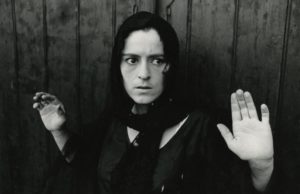
Ursula Reuter Christiansen, still from Skarpretteren [The executioner], 1971, film, 16 mm, color, sound, 35 minutes, Statens Museum for Kunst – National Gallery of Denmark
MD: In that sense, your individual story – your struggle with identity and belonging – and the feminist movement you were a part of, which stressed independence, created friction. Feeling “in between,” you made your iconic feminist film, Skarpretteren [The executioner, 1971], which portrayed the interlocking circumstances of being an artist trapped within a family structure. A deeply personal work, which you wrote, directed, and played the lead in, expressing your expectations of and disappointments in …
URC: … playing all the female roles—the mother, the wife, living on the island providing for others. Then, while editing the film, I received a letter. At the time, Dieter Roth (1930-1988) and Dorothy Iannone (b. 1933) were good friends of mine and Dorothy wrote: “The next big moment in history is ours.” I included the sentence in the film. That really opened it up. It mirrored the hope I had for the generations to come.
MD: Back then your film was criticised by other feminists. Why?
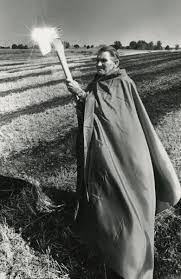
Ursula Reuter Christiansen, still from Skarpretteren [The executioner], 1971, film, 16 mm, color, sound, 35 minutes, Statens Museum for Kunst – National Gallery of Denmark
URC: For being too desolate, too melancholic, too hopeless, too feminine, in fact. I was invited to screen my film at the Berlin Frauen Film Festival [the first international women’s film festival], I was booed out. I was in shock. Most of the films screened were very aggressive towards patriarchy. Especially the Italian art groups. They made films where they cut off the penises of old marble sculptures and so on. They thought I was way too weak. Pull yourself together, they said. Back then my melancholy did not fit with that feminist scene.
MD: Still, you were an important protagonist in the 1970s Danish feminist movement and the first female professor at the art academy in Hamburg (1992-1997), as well as the first female professor at the painting department of the Royal Danish Academy of Fine Arts in Copenhagen (1997-2006). Do you consider yourself a feminist?
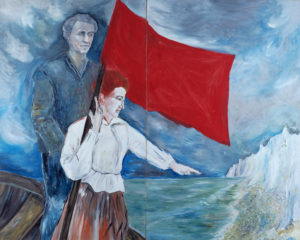
Rosa Luxemburg foran of Møns Klint [Rosa Luxemburg in front of Møns Klint], 1975, lacquer on masonit, 2 pieces, 189 x 117 cm, Arbejdermuseet – The Workers Museum of Denmark Collection
URC: For me, feminism is not an isolated issue. For me, feminism is also about class. We cannot only fight the hierarchical structuring of genders. We have to organise, work together in groups, and create new systems. It’s not about replacement; we need to work for another system. A big inspiration throughout my life was communist activist and founder of Women’s International Day Clara Zetkin, who deeply opposed the concept of “bourgeois feminism,” which she claimed was a tool to divide the unity of the working classes.
Therefore, when people ask me, “Are you a feminist?” I say, “Yes, but.” We cannot isolate ourselves by saying, “Oh I am feminist, and I work for my rights.” We have to come together. Otherwise we will never change anything. It always started with coalition, and a big will to change.
Bizarro is an artistic curatorial research collective in an underground cellar in Copenhagen. In August 2020 U. R. Christiansen presented the exhibition TO THE BLUE HELL, a total-installation of wall painting, sculpture, sound, text, textile and objects elaborating on her recent semi-autobiographical writings.
Ursula Reuter Christiansen (b. 1943) was born in Trier, Germany, and lives and works in Denmark. In 1969 she graduated from the Art Academy in Düsseldorf, where she studied sculpture under Joseph Beuys. She was an active participant in the feminist movement and social critique of the 1970s. She represented Denmark at the 2001 Venice Biennale alongside Henning Christiansen. Her film Skarpretteren [The Executioner, 1971] was screened at the first international women’s film festival in Berlin and is now in the collection of the National Gallery of Denmark.
Writer, curator and art historian Mai Dengsøe (b. 1991) graduated from the University of Copenhagen. She is a part of the artistic curatorial research collective and exhibition space Bizarro and has for several years lived in the countryside of Denmark working at Kunsthal 44 Møen and with the artist Ursula Reuter Christiansen as her assistant and collaborator, building a bridge between generations. M. Dengsøe’s style, approach and interest constitute a rare eclectic approach that is at ease with the coexistence of fiction and artmaking along with theory and curating. Currently she works as a curator at kunsthalle Rønnebæksholm, and has just completed the first monograph on Reuter Christiansen’s work, Poppies Mutate into Bats: a 60-years Expanse of Paintings, to be published in November 2021.
Links:
https://ursulareuterchristiansen.com
https://bizarro.dk/to-the-blue-hell.html
An article produced as part of the TEAM international academic network: Teaching, E-learning, Agency and Mentoring.

